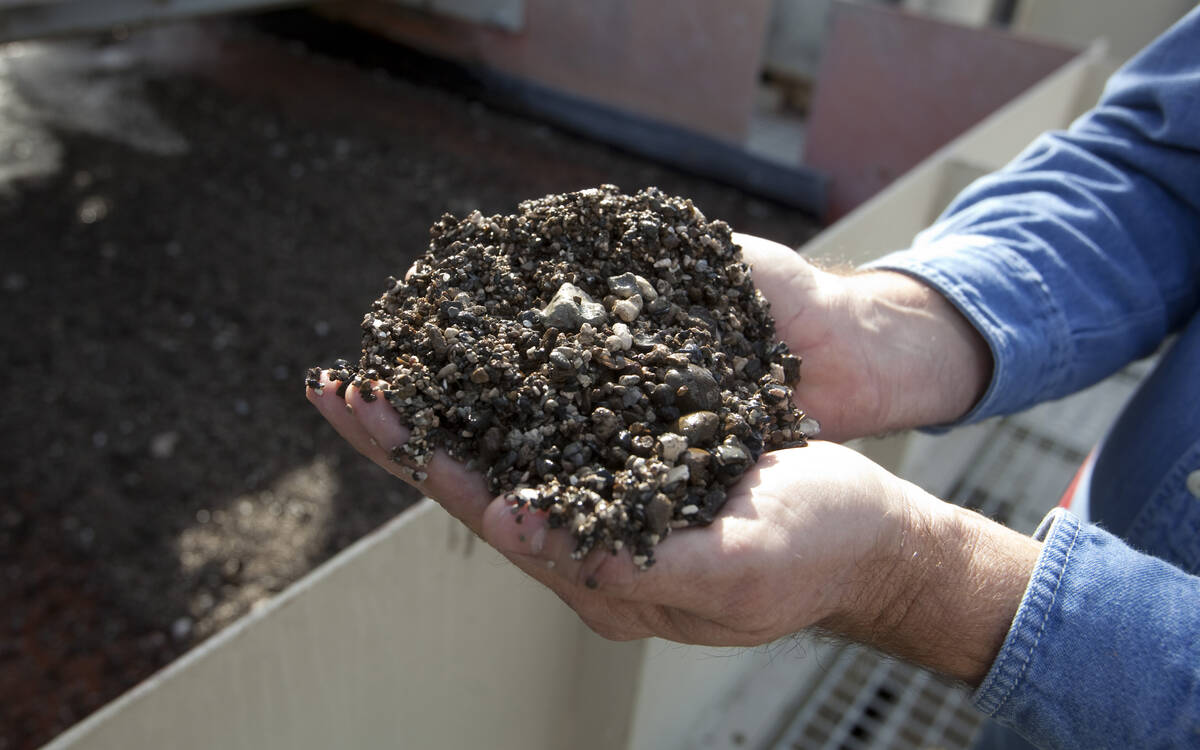STRATHCLAIR, Man. – Silence hangs over the community theatre, interrupted only by the ticking of a clock and the dull hum of fans suspended from the high ceiling.
It’s 4:30 on a Saturday afternoon. The theatre is open but no one lingers on stage or in the rooms where colourful costumes and props share the moment of slumber.
The stillness ends late in the afternoon, when people filter into the building, first as a trickle and then as a steady stream.
Actors and actresses don their costumes and bustle about, unable to hide the giddiness or anxiety of knowing that this is their last dress rehearsal before the opening night of the musical Bye Bye Birdie. Musicians appear and warm up in the small orchestra pit, sunken into the floor in front of the stage. Others devote themselves to checking the sets, props, lighting and sound systems.
Read Also

Phosphate prices to remain high
Phosphate prices are expected to remain elevated, according to Mosaic’s president.
Few things are as precious as this for Neil Gamey and Eleanor Marks. Musicals have been entwined with their lives for more than two decades.
Held in a theatre once destined for demolition, the plays have grown into an entertainment and social hub, where memories and lasting friendships are made.
“Everybody gets very close when you’re doing something like this,” said Marks, who along with Gamey was among a small group that met in the fall of 1982 to begin planning for the first major production the following spring. “We’ve had a lot of laughs and we’ve had a few cries.”
Marks and Gamey did not know in 1982 that they were helping set the stage for musicals that would attract sold-out audiences consistently for the next 22 years. Nor did they know the success of the musicals and the restoration of the theatre would go hand in hand.
Those involved at the outset remember a building that was in decay after several years of abandonment. The structure lacked some of the features typically needed for large, live musical productions. The stage was too small, the bathrooms could accommodate only one person at a time, and the area behind the stage was too cramped to hold much in the way of sets, props or actors and actresses.
“We started with what we had,” said Gamey, “and always it seemed a distant dream that we would one day have actual dressing rooms and a backstage area that most theatres just take for granted.”
Despite the challenges, the first show went ahead on the evening of April 7, 1983. A history book on the Strathclair Drama Club describes how the house lights dimmed, the curtains went up and a capacity crowd was treated to a performance of The Sound of Music.
“We sold every single ticket and we had a waiting list,” said Marks.
The success of the musicals became the catalyst for restoring the theatre building, originally built as a movie hall in 1948 in Strathclair, Man.
Over the years, modern sound and lighting systems were added, new seats were installed and additions built to allow a larger stage, a modern concession and washrooms, and more room backstage for sets, props and performers.
But it was the challenges during the earlier years of the musicals that people often refer to when queried about their fondest memories of the theatre.
They remember an improvised alleyway made from planks draped with plastic to protect actors and actresses from rain or snow as they shuttled between the theatre and a neighbouring house to hold those waiting to perform.
“They’d be running back and forth through snowbanks to change,” remembers Barb Hamilton, a Shoal Lake, Man., resident who has been involved with the musicals for 12 years. “It was quite the ordeal.”
And there was the time one of the town’s main water lines broke during one of the earlier musicals. The toilets needed to be flushed, so water was hauled to the theatre and then conveyed by hand in pails to refill the toilet tanks.
Also firmly etched in people’s minds is what became known as The Shack. It was one of the earlier attempts to create more room backstage and was nothing more than a rickety lean-to built from salvaged lumber.
A kerosene heater was used to heat the shack. When it snowed, someone had to shovel the roof off to prevent it from collapsing. Insulation was tucked into holes to keep the cold out.
“It was literally just a shack,” said Gamey, who still laughs when he thinks back to those days.
“It did not have a proper roof even. No one ever envisioned that it would stay up for what was probably 10 years.”
As for the musicals, one of the most vivid memories was the year the lead actor developed laryngitis.
When opening night arrived, that actor performed his role, but was forced to lip synch the words while someone behind the curtains delivered his lines.
Most of the audience seemed unaware of the deception, but the five remaining performances of the musical were postponed, pending the leading man’s recovery of his voice.
“It was disappointing, but the show did go on,” said Hamilton.
The benefits of the theatre are not confined to Strathclair and the immediate area. People wanting to take part in the musicals are drawn from communities as far away as 100 kilometres. Participants range from 12 years old and up.
Murray Rapley, a Strathclair resident, became involved in the musicals in 1985. He enjoys the camaraderie that develops in the months leading up to the final week of public performances and he feels some loss after the end of each year’s production when people may not see each other for another year.
“We have a lot of fun,” said Hamilton, who was an actress and assistant director for this year’s production.
For the actors and actresses, it is a chance to capture a moment upon the stage that they might not otherwise have had, Marks said. The theatre helped launch a number of local youth into further studies and work in the performing arts following high school.
“It gives people a chance to get out and showcase their talents,” said Marks, who was jotting down notes during the dress rehearsal to highlight parts of the performance that were going well and those that needed improvement. “It’s a great thing.”
Besides the local drama club, a theatre committee was formed for Strathclair and district. The committee and drama club work closely on upkeep and renovations to the building.
Touring groups are brought in to extend the use of the Strathclair Bend Theatre beyond the musical productions. Dance recitals and band and Christmas concerts are also held there.
At least $250,000 has been spent on the theatre restoration over the past two decades. Money came from a variety of avenues, including ticket sales to the musicals, donations from businesses and individuals, some support from government and other fundraising efforts.
This year’s production ran April 12-17. As with the previous musicals, the tickets were sold out for all six nights.














